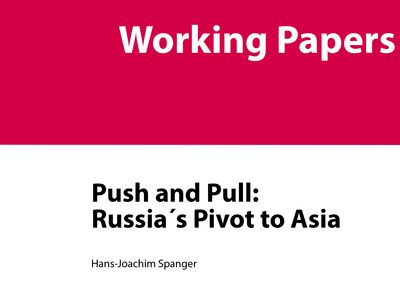In the wake of the crisis in and around Ukraine and the subsequent marked deterioration of its relations with the West, Russia has embarked on a new policy direction: its “pivot” to Asia (or rather China), in Russian terms Povorot na Vostok (Turn to the East).
In Russia’s turn to the East push and pull complement each other. At the same time it is something of everything. It follows the pragmatic need to accommodate a big neighbor (China) and at the same time charges this relationship with broad-based geostrategic objectives (helping multipolarism to come true). It aims at making proper use of unprecedented economic opportunities abroad, and at the same time it calls for decoupling and import substitution. It projects to fully develop the potential of Russia’s lands east of the Urals, but at the same time keeps it secluded. It not only turns East but also inwards and backwards.
Working Paper No. 29 “Push and Pull: Russia's Pivot to Asia”, written by Hans-Joachim Spanger, analyzes these various elements connected with Russia’s Asia pivot: It addresses the rationale of Russia’s turn to the East, presents the record to date, assesses the problems and risks and provides some concluding thoughts about the prospects.
In conclusion Russia’s turn to the East presents a mixed picture. It is certainly not predicated on a modernization or development strategy, but rather amounts to damage limitation. Yet damage limitation entails costs and as a rule does not follow an economic rationale. In this sense the push seems to dominate the pull. Substituting the Western direction by the Chinese rather than complementing it – as originally conceived – is not a promising proposition.
This PRIF Working Paper can be downloaded here.
